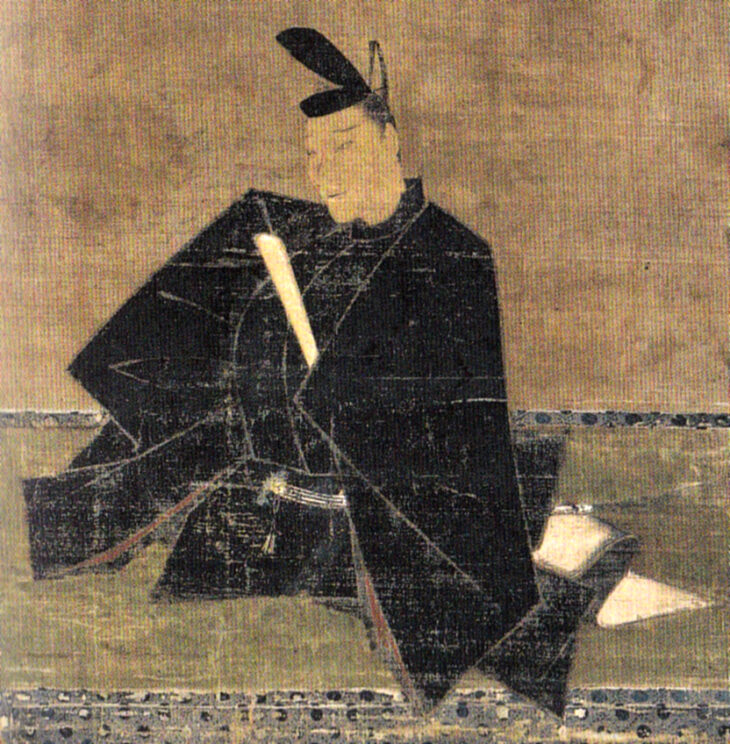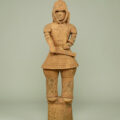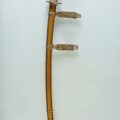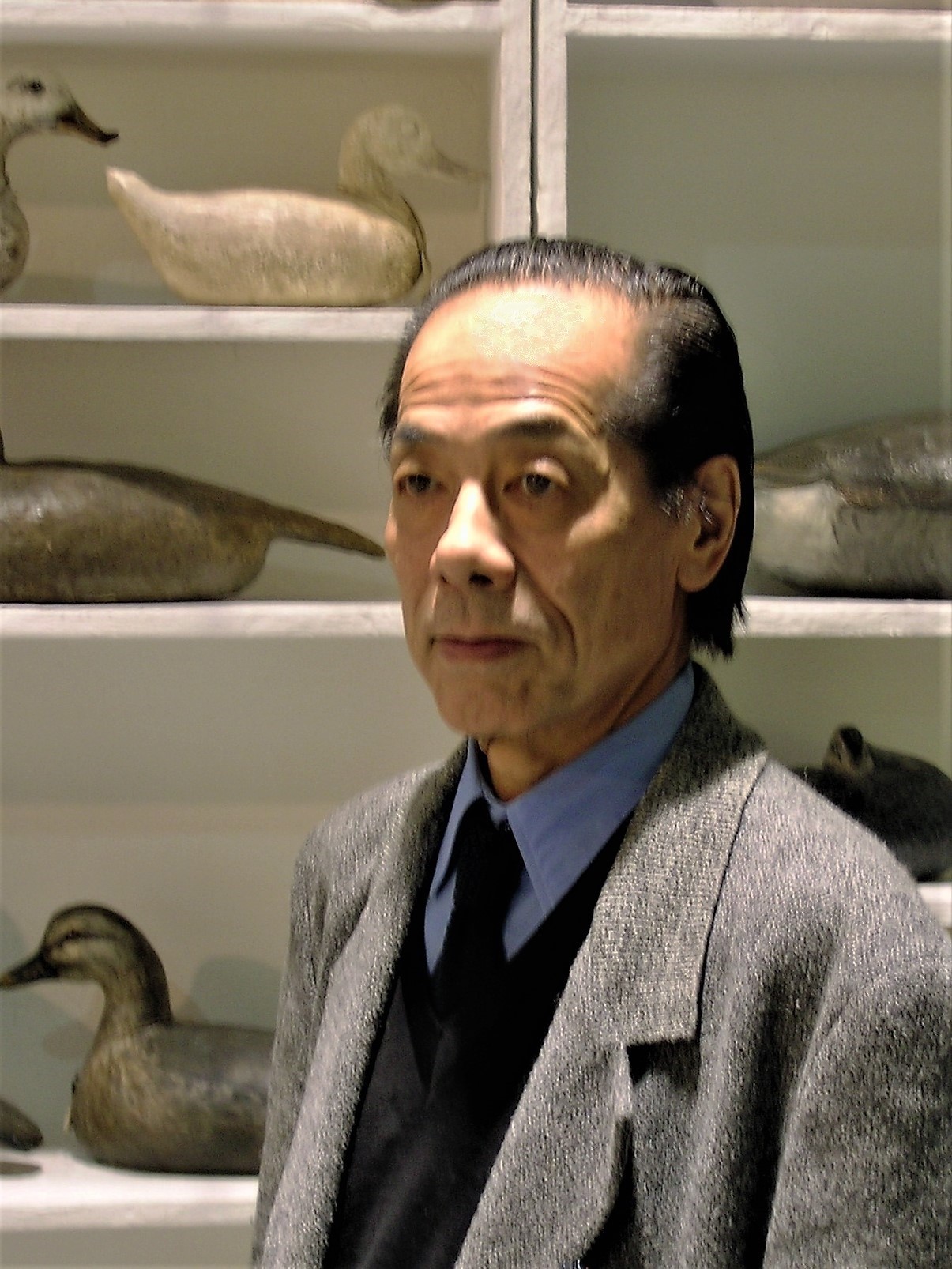Looking Towards Zero with the Hyakunin Isshu―Fujiwara no Teika Was Not the Editor
Tabuchi Kumiko, Professor, Waseda University
Towards Zero is a masterpiece mystery novel by Agatha Christie. The time has now come to look back to the “zero times” of the Hyakunin Isshu (One Hundred Poems by One Hundred Poets), as well.
The Hyakunin Isshu is one of the most well-known anthologies of waka (Japanese poems) from Japanese classical literature, and it is generally believed that the editor of this anthology was Fujiwara no Teika (1162–1241). However, there are many puzzling questions and contradictions when attributing the editing of the Hyakunin Isshu to Teika. Without answering these questions, a variety of hypotheses have appeared, and it has become almost universally accepted that the Hyakunin Isshu was “selected by Teika.” However, on further examination of each of the questions, it becomes clear that this was not the case.
About 70 years ago, the Hyakunin Shuka, an anthology that was very similar to the Hyakunin Isshu anthology, was first discovered by the Archives and Mausolea Department of the Imperial Household Agency. In recent years, it was also found by the Reizei family [family of grand masters of waka poetry, descended from Fujiwara no Shunzei and his son Teika] in Kyoto. The Hyakunin Shuka (One Hundred Superior Poems by One Hundred Poets [actually 101 poems]) and the Hyakunin Isshu both feature one poem per poet. They both have the same 97 poems, but the arrangement of the poems differs overall and the important last two poems also differ.
Emperor Gotoba (1180-1239)
Hito mo oshi
Hito mo urameshi
Ajiki naku
Yo o omou yue ni
Mono omou mi wa
Some men are hateful to me;
And this wretched world
To me, with all my sadness,
Is a place of misery.
Emperor Juntoku (1197-1242)
Momoshiki ya
Furuki nokiba no
Shinobu ni mo
Nao amari aru
Mukashi nari keri
In this ancient house,
Paved with a hundred stones,
Ferns grow in the eaves;
But numerous as they are,
My old memories are more.
(Translation for Ogura Hyakunin Isshu by
Clay MacCauley [1843-1925])
These are the last two poems of the Hyakunin Isshu, and they were not adopted into the Hyakunin Shuka.
So why were the poems in the Hyakunin Isshu considered to be selected by Teika despite questions remaining? The first reason might be because researchers read too much into Teika’s emotions. The fateful relationship between talented poet Teika and Gotobain (Emperor Gotoba), two people who represent the time of Shin Kokin Waka Shu (New Collection of Ancient and Modern Poetry), has, in a sense, perplexed researchers. These two encountered one another around the beginning of the time of Shin Kokin Waka Shu when waka culture flourished at court, and they soon found themselves embroiled in conflict with each other, while recognizing each other’s talents. In the Jokyu no Ran (Jokyu War) in 1221, Emperor Gotoba plotted the overthrow of the Kamakura Shogunate, but after his defeat, he was exiled to Oki Island in what is now Shimane Prefecture. Emperor Gotoba on Oki Island and Teika in Kyoto were far apart and never met again. Teika, who became a leading figure in poetry circles in Kyoto, compiled the ninth imperial anthology, Shin Chokusen Waka Shu (New Imperial Anthology of Japanese Poetry) upon receipt of an Imperial order. However, due to political pressure, not even a single poem of the defeated Emperor Gotoba or his son, Juntokuin (Emperor Juntoku), were included in Shin Chokusen Waka Shu.
Many people believe that, inwardly unhappy about this, Teika fulfilled his personal wish by soon creating the Hyakunin Isshu, which he did by editing the Hyakunin Shuka and incorporating poems by Emperor Gotoba and Emperor Juntoku (some explanations have it the other way around). While this is an alluring explanation, it is not plausible. The relationship between Teika and Emperor Gotoba was complex and warped. Teika did not readily share his unspoken thoughts towards Emperor Gotoba with others, nor did he mention much in his own personal diary, Meigetsuki. It is unlikely that Teika would try to fulfill a personal wish with an anthology to be presented to others, in this case, being prominent members of the Kamakura Shogunate (1185–1333).
For anthologies of waka poems, whether imperial anthologies or superior anthologies, an editor (compiler) would compile poems after great thought given to what poems to include and how to arrange them. In doing so, the editor’s intentions, view of waka poetry, view of the world and history, and consideration, awareness, and more of the recipient and readers would be shown.
Currently, May 27 is “Hyakunin Isshu Day,” and this is based on an entry from May 27, 1235 in Teika’s diary. In the diary entry from the last years of his life, he writes that he wrote and sent shikishigata (colored, square-shaped paper inscribed with verses, then cut and pasted them onto the upper portion of large screens and sliding door panels) to decorate a shoji paper sliding door (modern day fusuma sliding doors) at the villa of Rensho Nyudo (Utsunomiya Yoritsuna, 1178–1259). Inscribed on the shikishigata were poems of ancient poets as requested by Rensho. Rensho was an important figure in the Kamakura Shogunate and a powerful vassal, the father-in-law (wife’s father) of Teika’s heir, Tameie (1198–1275), and with whom Teika was very close. The Utsunomiya clan was wealthy and powerful and had marriage connections to the regents of the Kamakura Shogunate, the Hojo clan.
The Rensho [Utsunomiya] clan were an important relation to the Teika family. Deliberate and level-headed, Teika would not have included the poems of Emperor Gotoba and Emperor Juntoku, who had been exiled to Oki Island and Sado Island in present-day Niigata Prefecture after fighting the Shogunate in the Jokyu no Ran. Teika himself had a close relationship with members of the Hojo clan, and they were visitors to Teika’s residence. There are many other reasons, but the entry in his personal diary should be seen as indicating the Hyakunin Shuka and not the Hyakunin Isshu. Surely he wrote down poems from the Hyakunin Shuka onto the shikishigata as requested by Rensho and sent them on the date in his diary.
We haven’t focused on this yet, but there were two other gifts with poems given to Rensho by Teika and Tameie in addition to the byobu-uta (poems on themes depicted on folding screens) and shoji uta (poems on the shoji paper doors). The new waka poems written by Teika and Tameie were poems of respect towards Rensho’s intention and would have brought Rensho joy. The group of poems at the end of the Hyakunin Shuka also show a deep consideration for Rensho. In other words, in previous studies of the Hyakunin Isshu, what has been missing is the perspective of the anthology being a gift to Rensho. The Hyakunin Isshu was not a means for Teika to offer his own personal feelings.
Incidentally, about 50 pieces of Ogura shikishi (square pieces of fancy papers on which waka poetry were written at Ogura sanso [villa]) with poems from the Hyakunin Isshu survive today, and they have been credited as being “written by Teika.” Though treasured since ancient times, a majority of these pieces have been deemed later fakes. There are several pieces believed to be in Teika’s own handwriting, and among them, there are no examples of Emperor Gotoba’s Hito mo oshi… or Emperor Juntoku’s Momoshiki ya…. Here again, there is no proof that the Hyakunin Isshu was selected by Teika.
The Hyakunin Isshu was later called Ogura Hyakunin Isshu, and it is said that this collection was sheets of shikishigata decorating the shoji of Teika’s villa at the foot of Mt. Ogura, but as revealed in Meigetsuki, this was in fact Rensho’s villa. Teika’s Saga sanso and Rensho’s Chuin sanso were likely adjacent to one another (near modern day Enri-an Temple), but at the time, Teika’s Saga sanso was in quite a rough state. Elderly Teika rarely visited and let a keishi (steward) who had served him for many years live there. In April 1235, as mentioned above, Teika stayed at Saga sanso, which was unusual, to recover from a severe illness, but as he apparently felt the aging villa difficult to live in, he returned to his Kyoto residence as soon as he recovered on May 5. Later, on May 27, he wrote the shikishigata and sent them to Rensho from his residence in Kyoto. Therefore, the idea that Teika lived in his villa, compiled Hyakunin Isshu with elegance, and wrote the shikishigata was a later fabrication.
For the illustrations as well, there is a well-established idea that the kasen-e (illustrated scroll of celebrated poets) for the Hyakunin Isshu were there from the beginning, as they flourished in the Edo period (1603–1867) and there are even karuta (traditional Japanese playing cards) with these illustrations, but for several reasons, it is thought that during Teika’s time, the shikishigata were without kasen-e and were simply poems.
Thus, if we go back to the beginning to only the records we have of the time and take away all the speculation, it becomes clear that the poems in the Hyakunin Shuka were selected by Teika, and the Hyakunin Isshu was compiled by someone in a later generation from the middle or later part of the Kamakura period. The compiler of the Hyakunin Isshu probably thought that the waka poems of Emperor Gotoba and Emperor Juntoku were essential and incorporated Hito mo oshi … and Momoshiki ya … from an imperial anthology as they symbolize the tragic lives of the emperors.
However, 97 poems found in the Hyakunin Isshu are the same poems compiled by Teika in the Hyakunin Shuka, and the majority of those were selected by Teika. The structural concept of the Hyakunin Isshu follows that of the Hyakunin Shuka, and the brilliant methodology of the Hyakunin Shuka was fundamentally inherited by the Hyakunin Isshu. The idea of taking one poem from each poet’s imperial anthology to create a set of one hundred poems was Teika’s. His anthology did not use the arrangement of imperial anthologies with categories for four seasons, love and miscellaneous, nor did it use the format for uta-awase (poetry contest) with poems in pairs. It also did not include kotobagaki (explanatory text). The composition of arranging poets and poems simply in chronological order may seem simple, but it was in fact innovative. This anthology can easily be divided into one hundred parts, and as each part is complete with a single poem, it could be used in a variety of media, evidenced by the fact that it was developed into karuta cards later. It is a versatile format that could be arranged in a variety of ways. One hundred may seem like a cleanly closed-off world, but it has potential and is quite open. It is both study and play. Though compact as a text of waka poems, it is filled with waka rhetoric, such as jokotoba (prologue), makura kotoba (pillow words), kakekotoba (puns), engo (associated words), utamakura (places with poetical associations), and is suitable even for novices. When looking at the entire anthology, you can sense the flow of time for the long, 600-year history of waka poetry, from ancient times to the dynastic period and the early middle ages. The lives of one hundred poets seem to mingle with one another in this collection of one hundred poems. Within the anthology are not only famous poets, but the presence of less famous poets, as well. There is a timeless universality and diversity. Within these types of varied mechanisms and ideas are the genius, innovation, bird’s eye view, and compositional skills of Teika.
The next question is who compiled the Hyakunin Isshu? One explanation credits it to Teika’s son Tameie, but there are still questions about this anthology being selected by Tameie. In fact, the Hyakunin Isshu (Hyakunin Shuka) was not recorded in any literature for 120 years after Teika’s death, and did not appear in any literature until the Nanboku-cho (North and South court) period (1337–1392). Moreover, the Ogura Shikishi was not mentioned as being “written by Teika” until the end of the 15th century. The creation and circulation of the Hyakunin Isshu must be considered within the cultural trends of later generations when Teika became a legend rather than in the period in which he lived.
The above research of searching for the author or editor of a work and the environment surrounding its creation is a bit like solving a quality mystery. Only when we reach a conclusion that does not contradict all of the evidence by determining the reliability of each remaining piece of literary evidence and through long, grueling, steady verification do we get a sense of coming close to the work and its author and reach a gentle feeling towards the work examined.
Translated from “‘Hyakunin Isshu’ wo zero jikan e—Fujiwara no Teika ga senja dewanai koto (Looking Towards Zero with the Hyakunin Isshu―Fujiwara no Teika Was Not the Editor),” Tosho, September 2022, pp. 24–27. (Courtesy of Iwanami Shoten, Publishers) [December 2022]
Keywords
-
- Tabuchi Kumiko
- Waseda University
- Hyakunin Isshu
- One Hundred Poems by One Hundred Poets
- waka
- Fujiwara no Teika
- Tameie
- Hyakunin Shuka
- Shin Kokin Waka Shu
- Jokyu War
- Shin Chokusen Waka Shu
- Emperor Gotoba
- Emperor Juntoku
- Rensho Nyudo
- Ogura Hyakunin Isshu





